第30章 THE STATE AS A WORK OF ART(30)
Alliances were at the same time formed with the Turks too, with as little scruple or disguise; they were reckoned no worse than any other political expedients.The belief in the unity of Western Christendom had at various times in the course of the Crusades been seriously shaken, and Frederick II had probably outgrown it.But the fresh advance of the Oriental nations, the need and the ruin of the Greek Empire, had revived the old feeling, though not in its former strength, throughout Western Europe.Italy, however, was a striking exception to this rule.Great as was the terror felt for the Turks, and the actual danger from them, there was yet scarcely a government of any consequence which did not conspire against other Italian States with Mohammed II and his successors.And when they did not do so, they still had the credit of it; nor was it worse than the sending of emissaries to poison the cisterns of Venice, which was the charge brought against the heirs of Alfonso, King of Naples.From a scoundrel like Sigismondo Malatesta nothing better could be expected than that he should call the Turks into Italy.But the Aragonese monarchs of Naples, from whom Mohammed--at the instigation, we read, of other Italian governments, especially of Venice--had once wrested Otranto (1480), afterwards hounded on the Sultan Bajazet II against the Venetians.The same charge was brought against Lodovico il Moro.'The blood of the slain, and the misery of the prisoners in the hands of the Turks, cry to God for vengeance against him,' says the State historian.In Venice, where the government was informed of everything, it was known that Giovanni Sforza, ruler of Pesaro, the cousin of Lodovico, had entertained the Turkish ambassadors on their way to Milan.The two most respectable among the Popes of the fifteenth century, Nicholas V and Pius II, died in the deepest grief at the progress of the Turks, the latter indeed amid the preparations for a crusade which he was hoping to lead in person; their successors embezzled the contributions sent for this purpose from all parts of Christendom, and degraded the indulgences granted in return for them into a private commercial speculation.
Innocent VIII consented to be gaoler to the fugitive Prince Djem, for a salary paid by the prisoner's brother Bajazet II, and Alexander VIsupported the steps taken by Lodovico il Moro in Constantinople to further a Turkish assault upon Venice (1498), whereupon the latter threatened him with a Council.It is clear that the notorious alliance between Francis I and Soliman II was nothing new or unheard of.
Indeed, we find instances of whole populations to whom it seemed no particular crime to go over bodily to the Turks.Even if it were held out as a threat to oppressive governments, this is at least a proof that the idea had become familiar.As early as 1480 Battista Mantovano gives us clearly to understand that most of the inhabitants of the Adriatic coast foresaw something o f this kind, and that Ancona in particular desired it.When Romagna was suffering from the oppressive government of Leo X, a deputy from Ravenna said openly to the Legate, Cardinal Giulio Medici: 'Monsignore, the honorable Republic of Venice will not have us, for fear of a dispute with the Holy See; but if the Turk comes to Ragusa we will put ourselves into his hands.'
It was a poor but not wholly groundless consolation for the enslavement of Italy then begun by the Spaniards, that the country was at least secured from the relapse into barbarism which would have awaited it under the Turkish rule.By itself, divided as it was, it could hardly have escaped this fate.